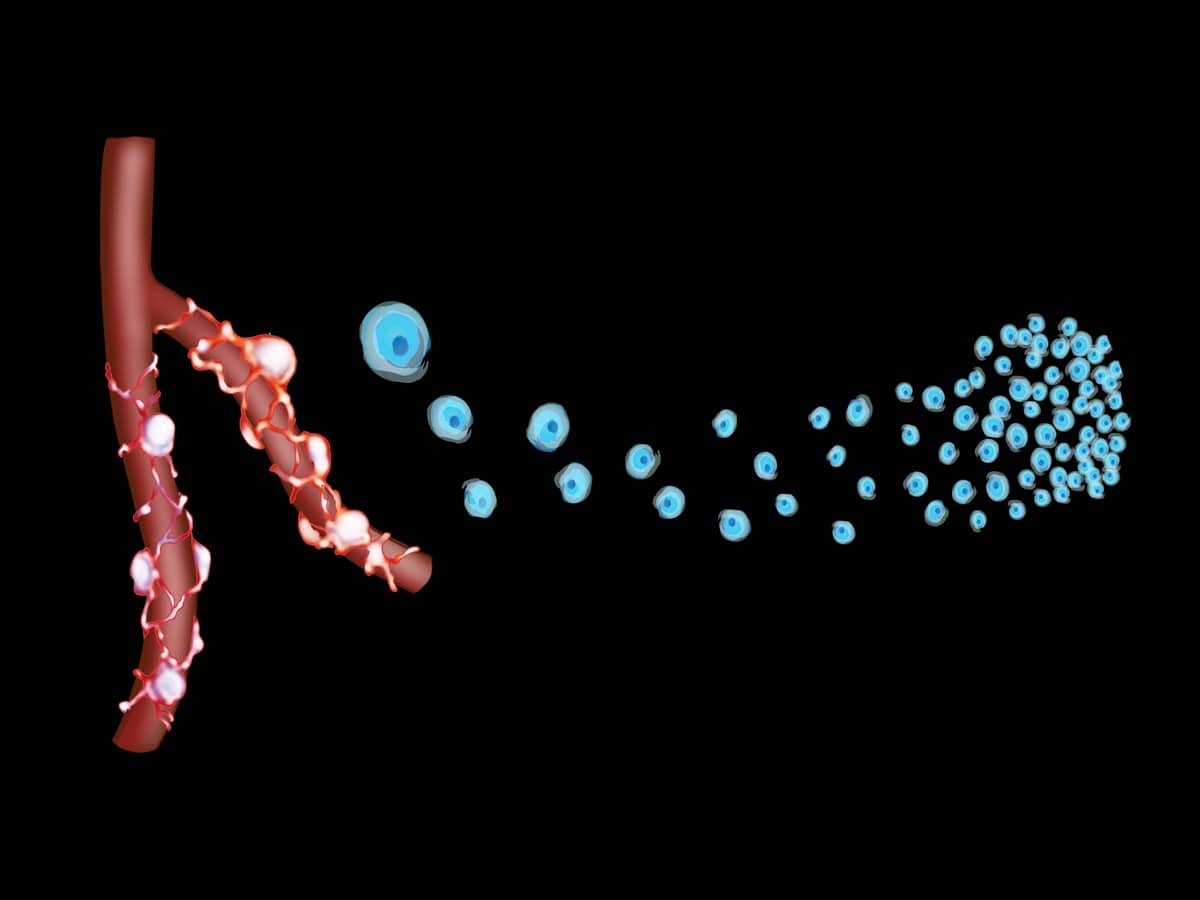Stem Cell Growth Factors Update 2024
The science of stimulating healing is driving multiple new approaches in orthopaedics. Here is our view at the start of 2024.

We are now in what I call the “Anabolic Era” of sports medicine and arthritis care. Rather than surgically removing tissues and shutting down the healing process with cortisone injections, we are replacing missing tissues (such as ligaments, meniscus, and articular cartilage) with donor tissues and regeneration templates, and hastening their regrowth with cells, growth factors, and lubricants. Some brief highlights:
- Cells. Cells produce collagen repair tissue. They also release growth factors and all sorts of proteins and genetic material that direct healing in all living things. Unfortunately, when harvested from a person and then injected into tissue, they tend to die rather quickly. The most potent cells are those derived from stem cells, which live on the walls of vessels. These cells are in a sense immortal; when stimulated they divide, reproducing one copy of themselves, and another copy called a progenitor cell that rushes to the site of injury. These progenitor cells are the active agents directly responsible for the healing response. Every human has billions of them, more when younger than older, but still enough to promote healing. Bone marrow cells, fat cells, skin cells, and many other sources of injections used these days are all progenitor cells. But as cells tend to die when they are removed from the body and injected back into tissues, our bias is to inject recruitment factors that induce the native stem cells to divide and call the progenitor cells to the site of injury.
- Growth Factors. Growth Factors are chemical agents, hormones, proteins, and other stimulants that induce cells to act. They may awaken dormant cells or stimulate active cells. They increase turnover or cell metabolism and increase collagen production from cells that are trying to lay down new collagen at the sites of tissue injury or tears.
- Chemotactic Factors are other agents (molecules) that, by inducing nerve stimulation, vessel growth, and other mechanisms, act as recruitment tools to bring stem cells to the sites of injury.
- PRP (platelet-rich plasma) is a combination of growth factors, chemotactic factors, and other components found in the alpha granules of platelets: the part of the blood most often associated with clotting. PRP is obtained by spinning blood in a centrifuge, concentrating these platelets, then releasing them into the site of injury. PRP appears to be most effective in its ability to systemically recruit progenitor cells, and locally reduce inflammation and pain. There is no clear advantage of bone marrow or fat-derived cell mixtures over PRP for most orthopaedic applications. PRP, when combined with the lubricant hyaluronic acid, is our most common injection. It has been so effective that most soft tissue injuries are treated with this “cocktail” combined with physical therapy, to help the patient heal without surgery whenever possible.
- Wharton’s Jelly is the lubricious material found in the umbilical cords of pregnant women. Nothing grows faster than the fetus, and the nutrients and stimulants provided by Wharton’s Jelly are potently antifibrotic, anti-inflammatory, anabolic, and antibiotic. The fountain of youth lies in these birth tissues, and they are highly likely to become the primary source of anabolic therapies going forward. Currently, Wharton’s Jelly is not approved in the US as the FDA considers it a drug and is awaiting completion of drug safety and efficacy trials. This will likely change—and hopefully soon as Wharton’s Jelly was used extensively in orthopaedics before the FDA restrictions without reported complications.
All tissues can be stimulated to heal faster and stronger. Our job is to figure out how—all while doing the maximum number of things for you, and the minimum number of things to you.
